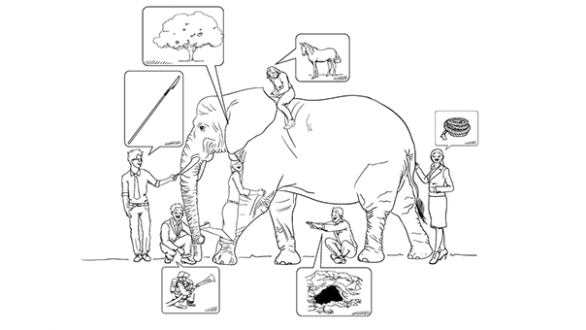A company’s core story or narrative is the story that explains a company’s eligibility. It’s the story of your company’s uniqueness and what creates value for your organization.
I often work with customers who have strong ideas, visions and dreams of what their brand and business narrative should convey and stand for. But when it comes to communicating this story (both internally and externally), the content is confusing, ambiguous and inconsistent.
Why is the core story so difficult to convey?
But why is the core story so difficult to communicate? And why do the company’s employees not have the same experience of the story across your organization? Why do your employees not act appropriately in relation to the story?

Make others understand your vision
The answer is quite simple. Companies should visualize their narrative, thus putting the right pictures on the core story. Because otherwise people will not understand what you’re trying to tell them. Did you know that the human brain computes visual information 60,000 faster than reading text?
Related: Comics in corporate communication
A vision means just that — an image or future scenario of where you want to go. But do your employees and colleagues see the same picture as you describe?
You probably know the ancient Indian story of a group of blind men trying to describe an elephant. Each of the blind men feels different parts of the elephant. Therefore, their vision of the elephant does not match.

An indifferent story
Most companies have a core story they like to tell anyone who’s listening. But all too often that narrative lacks essence, humor and purpose. And as it is often seen in corporate communication, the good pictures and memorable story elements are deleted out of the story. And so the story becomes indifferent and bland.
Invest time in your story
That’s why it’s important for companies to invest in developing a clear story. First, a clear core narrative creates a plan for and purpose of all your communication. Ideally, all your internal and external communication should be related to your core story – and gain value through that narrative.
Think customer-oriented
A core narrative usually takes the form of “who are we”-story or a “vision narrative”. It’s the story of your company, what you’re doing and who your employees are. But what’s your audience’s incentive to listen to you? What does your customer or employee gain from listening to you?
Therefore you should try to make your story more recipient-oriented. Why should someone give you their time? Try forming your story as a “why are we here?” story. Because in that way you get your audience more involved and interested.
Related: Storytelling archetypes
How to get started?
When you start creating your core story, it’s important to keep your audience in mind. Who are the? And what do you want them to feel after hearing your story? What do you want them to do?
- Who is your target audience?
- Why should anyone pay attention to your story?
- What is your goal with telling your story?